What was going on with these attacks on Audubon? Two
things really. Money and snobbery. The money side of things came mainly from
George Ord, who had completed Alexander Wilson’s American Ornithology
after Wilson had died in 1813, adding his own biography of Wilson. His vested
financial interests were at stake, and he resorted to snobbery in order to
protect Wilson’s legacy.
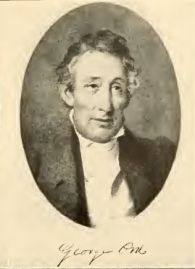 |
| George Ord |
Ord had been a friend of Wilson’s and had accompanied
him on several of his field-trips in North America, he edited Wilson’s works and
was involved in producing later editions of the Ornithology for the
American market. So the last thing he needed was competition, especially
competition from Audubon, whose works, lets face it, were superior to Wilson’s.
We have already seen the difference between the illustrations; Audubon’s large,
coloured and full of vitality, Wilson’s staid, drab and stilted by comparison.
In Ord’s view, Audubon’s plates were not restrained enough for a serious
scientific work, he objected to the intrusion of plants, flowers and background
or landscape details. These, he felt, were mere distractions, unseemly and
unnecessary, and Audubon’s life-like depictions of the birds were lurid, showy
and far too flamboyant.
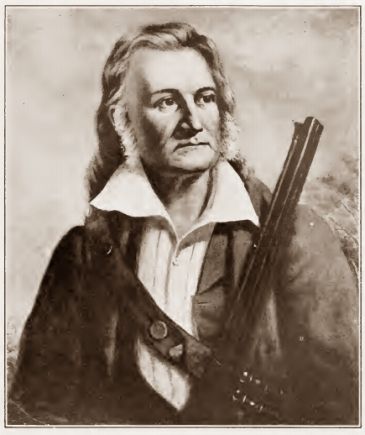 |
| J J Audubon |
Or, at least, these were the objections he used to attack
Audubon although, to my mind, he objected more to the possibility that Wilson’s
books would not sell nearly as well as before when the public had the option of
purchasing Audubon’s far more attractive books instead. And if his aesthetic
arguments carried little weight, he also raised doubts about Audubon’s
veracity. If he could show that Audubon was not getting his science right, then
why would anyone want to buy his books?
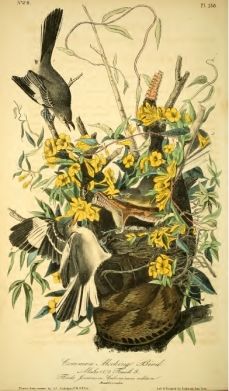 |
| J J Audubon - Mocking Birds Attacked by a Rattlesnake - Birds of America |
So, in the plate depicting a
rattlesnake attacking the nesting mockingbirds, he saw an opportunity to sow
the seeds of doubt in the minds of the serious ornithologists who were the
natural market for books about birds.
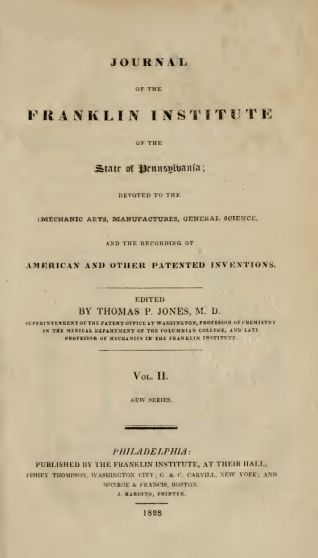 |
| Journal of the Franklin Institute - 1828 |
When Dr Thomas Jones printed the
criticism of Audubon’s paper Notes on the Rattlesnake in his Journal
of the Franklin Institute from a ‘scientific friend’, I think you’d
be safe to point the finger at Ord as the origin of the gripeing. Note, it’s
not just any old friend, it’s a ‘scientific’ friend, the tacit
implication being that Audubon’s scientific credentials might not be all that
they should be. Ord, as I have mentioned, edited Wilson’s works and in volume 9
of the Ornithology he included extracts from Wilson’s diaries and journals,
including an unflattering account of Wilson’s meeting with Audubon at
Louisville.
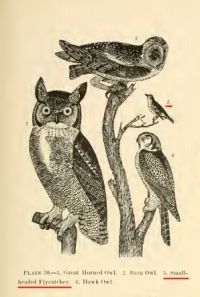 |
| A Wilson - Small Headed Flycatcher - American Ornithology |
One amusing incident in the spat is that Audubon, in volume 5 of
the Ornithological Biography, accuses Wilson of copying one of his
drawings of the Small Headed Flycatcher, which he included, without
acknowledgement, in his Ornithology. Ord sprang to Wilson’s defence – he
had been present when Wilson had shot the Flycatcher from which he had made his
drawing included in the book. The thing is, no ornithologist has ever seen the
Small Headed Flycatcher on the continent of North America since and it seems
that either, or both, illustrators had mistaken a juvenile bird from a
different species as a representative of an entirely separate (but
misidentified) species.
 |
| J J Audubon - Small Headed Flycatcher - Birds of America |
In the same vein, it looks like Audubon’s memory failed
him when he identified his squirrel-hunting snake as a rattlesnake. His
description is almost certainly of the Blue Racer (Bascanion constrictor), a
snake which, when threatened, coils itself and raises its head and tail, a
display of protective mimicry in which it attempts to copy the rattlesnake’s
behaviour. It may well be that Audubon remembered this display and, wrongly,
with hindsight ‘remembered’ a rattlesnake. Maybe it hardly matters, as
many correspondents provided evidence of the ability of the rattlesnake to
climb.
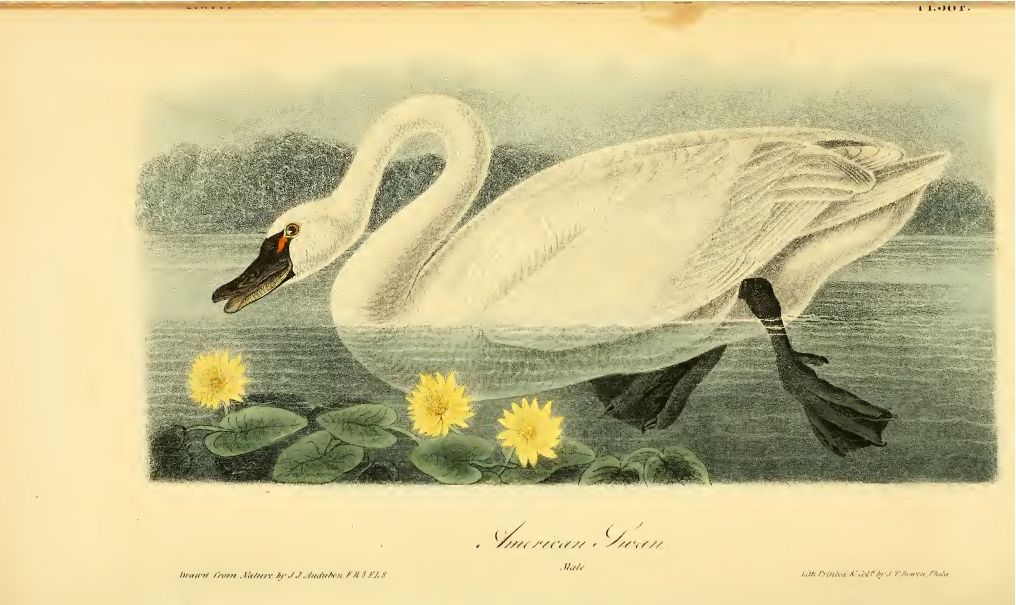 |
| J J Audubon - American Swan - Birds of America |
On the other hand, a yellow lily that appears in the plate of the
American Swan (from 1838), had long been dismissed as a fanciful invention by
Audubon until, in 1876, Mrs Mary Treat re-discovered the lily in a Florida
swamp.
 |
| J J Audubon - Turkey Vulture - Birds of America |
Another bone of contention was the question if birds have a sense of
smell. Audubon thought not, and conducted experiments, with Bachman, to prove
that carrion eaters, particularly vultures, found their food by sight alone.
Other naturalists were sure that birds used their sense of smell partially, if
not entirely, to sniff out rotting flesh. Anatomists seemed to prove the point,
when they discovered well-developed olfactory lobes and nerves in such birds,
although things took a turn when the same lobes and nerves were found in
insectivorous and granivorous birds. It remains a moot point (kiwis, it seems do
use their sense of smell) amongst ornithologists and research is still
on-going, even now.
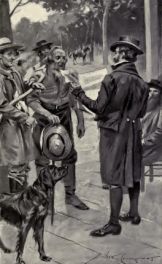 |
| $1,000 a Copy - One view of Audubon's Achievement |
George Ord was a figure to be pitied, driven, as it seems,
by internal contradictions rather than by spite or over-avariciousness. He saw
Audubon as a rival to Wilson, rather than a successor, and Audubon himself
thought of himself as continuing, rather than superseding, the Scots
poet-ornithologist. Frank L Burns, another biographer of Wilson, says of Ord
that although
“… admirable in many ways [he] was insanely intolerant of any opposition,”
and others who knew him describe him a difficult,
prickly character, with a short temper and sharp tongue, who destroyed a
portrait of himself that displeased him in spite of it being painted by his
son, and left $40,000 in his will to the Pennsylvania Hospital for the Insane,
whilst leaving out of the will several members of his immediate family who were
in dire financial need. Audubon, in the final volume of the Ornithological
Biographies, wrote the following dedication,
“I have pleasure in saying that my enemies have been few, and my friends numerous. May the God who granted me life, industry and perseverance to accomplish my task, forgive the former, and forever bless the latter.”
Tomorrow - The Limeys pitch in
No comments:
Post a Comment